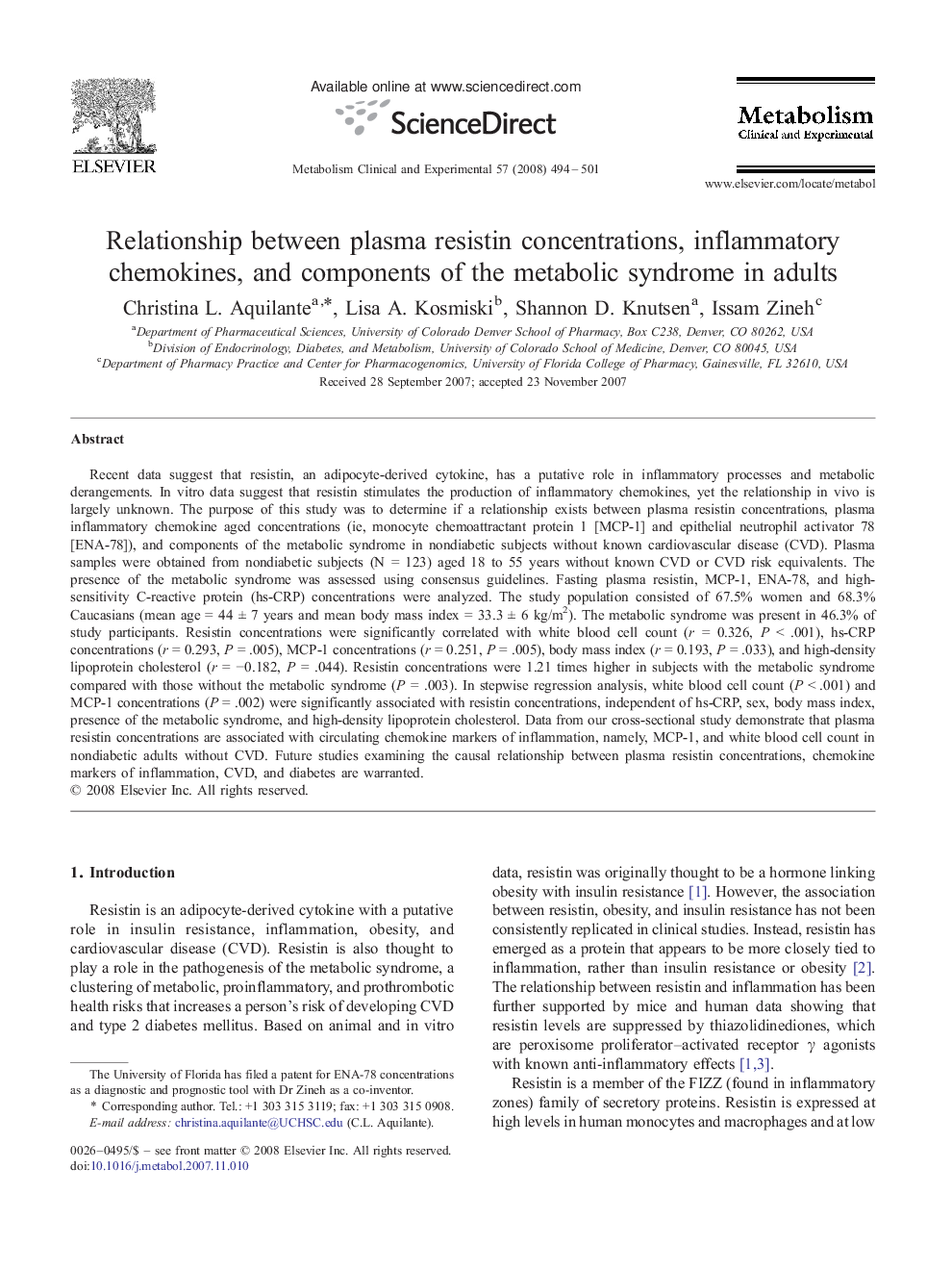| کد مقاله | کد نشریه | سال انتشار | مقاله انگلیسی | نسخه تمام متن |
|---|---|---|---|---|
| 2807423 | 1157166 | 2008 | 8 صفحه PDF | دانلود رایگان |

Recent data suggest that resistin, an adipocyte-derived cytokine, has a putative role in inflammatory processes and metabolic derangements. In vitro data suggest that resistin stimulates the production of inflammatory chemokines, yet the relationship in vivo is largely unknown. The purpose of this study was to determine if a relationship exists between plasma resistin concentrations, plasma inflammatory chemokine aged concentrations (ie, monocyte chemoattractant protein 1 [MCP-1] and epithelial neutrophil activator 78 [ENA-78]), and components of the metabolic syndrome in nondiabetic subjects without known cardiovascular disease (CVD). Plasma samples were obtained from nondiabetic subjects (N = 123) aged 18 to 55 years without known CVD or CVD risk equivalents. The presence of the metabolic syndrome was assessed using consensus guidelines. Fasting plasma resistin, MCP-1, ENA-78, and high-sensitivity C-reactive protein (hs-CRP) concentrations were analyzed. The study population consisted of 67.5% women and 68.3% Caucasians (mean age = 44 ± 7 years and mean body mass index = 33.3 ± 6 kg/m2). The metabolic syndrome was present in 46.3% of study participants. Resistin concentrations were significantly correlated with white blood cell count (r = 0.326, P < .001), hs-CRP concentrations (r = 0.293, P = .005), MCP-1 concentrations (r = 0.251, P = .005), body mass index (r = 0.193, P = .033), and high-density lipoprotein cholesterol (r = −0.182, P = .044). Resistin concentrations were 1.21 times higher in subjects with the metabolic syndrome compared with those without the metabolic syndrome (P = .003). In stepwise regression analysis, white blood cell count (P < .001) and MCP-1 concentrations (P = .002) were significantly associated with resistin concentrations, independent of hs-CRP, sex, body mass index, presence of the metabolic syndrome, and high-density lipoprotein cholesterol. Data from our cross-sectional study demonstrate that plasma resistin concentrations are associated with circulating chemokine markers of inflammation, namely, MCP-1, and white blood cell count in nondiabetic adults without CVD. Future studies examining the causal relationship between plasma resistin concentrations, chemokine markers of inflammation, CVD, and diabetes are warranted.
Journal: Metabolism - Volume 57, Issue 4, April 2008, Pages 494–501